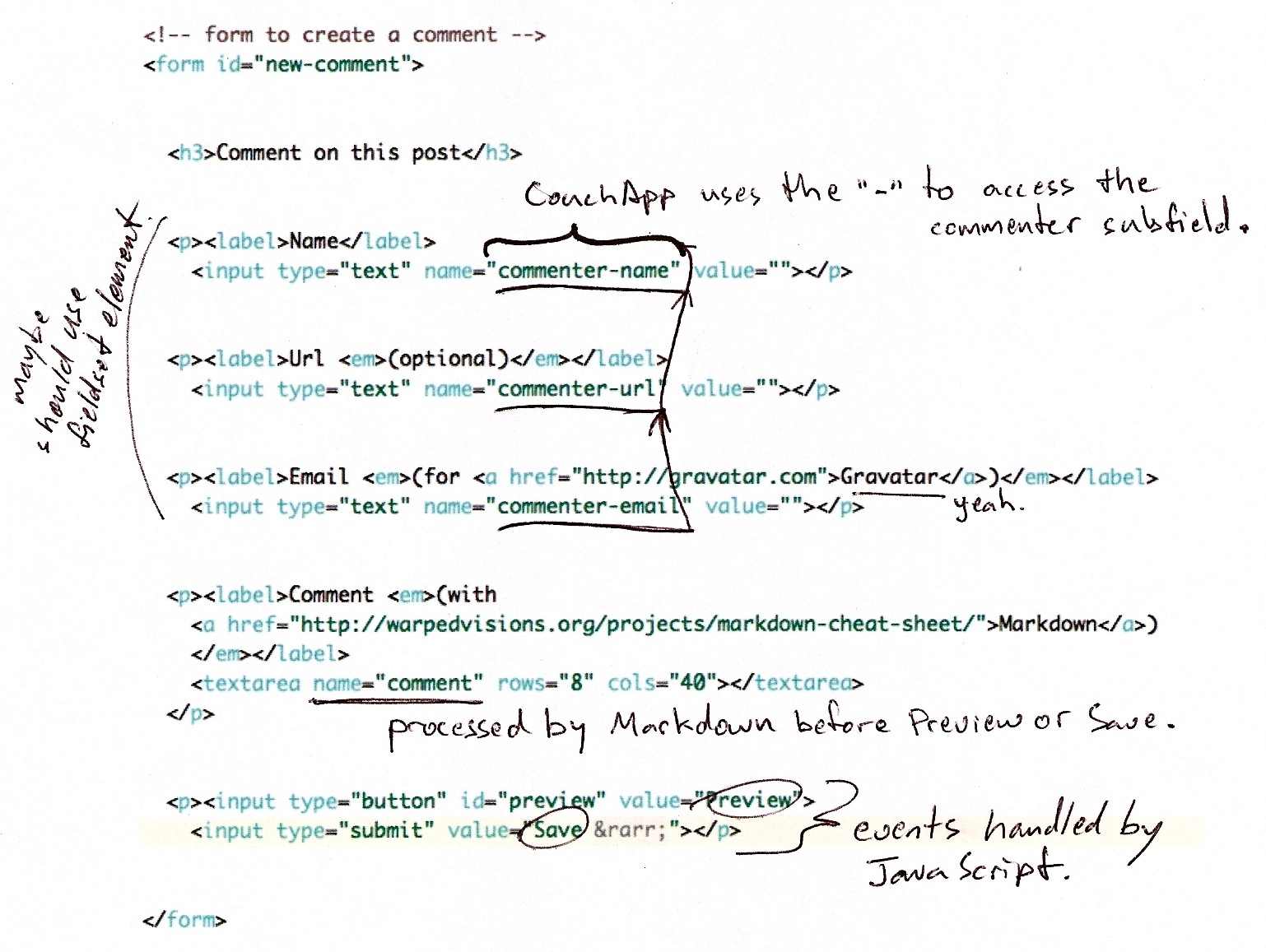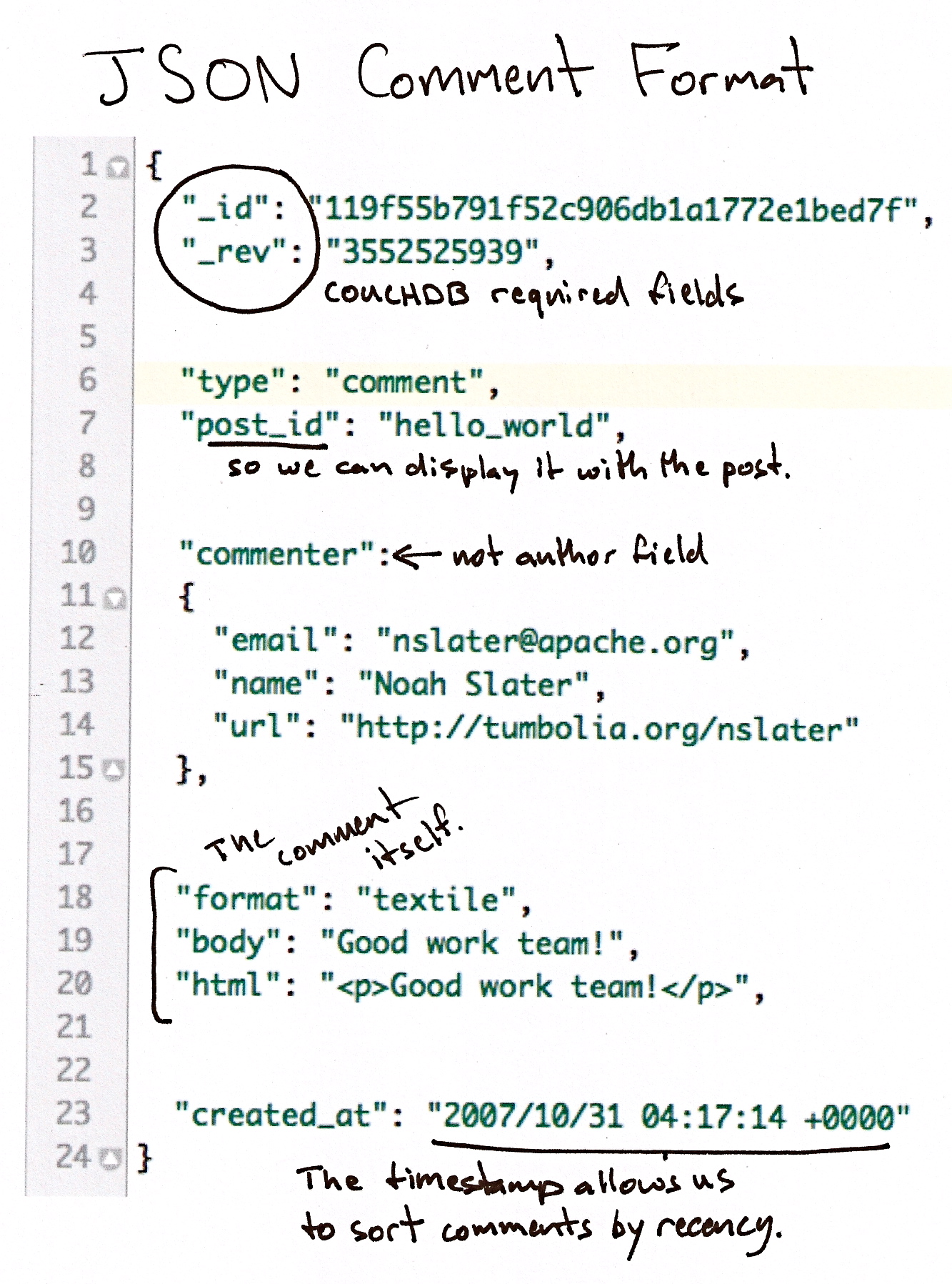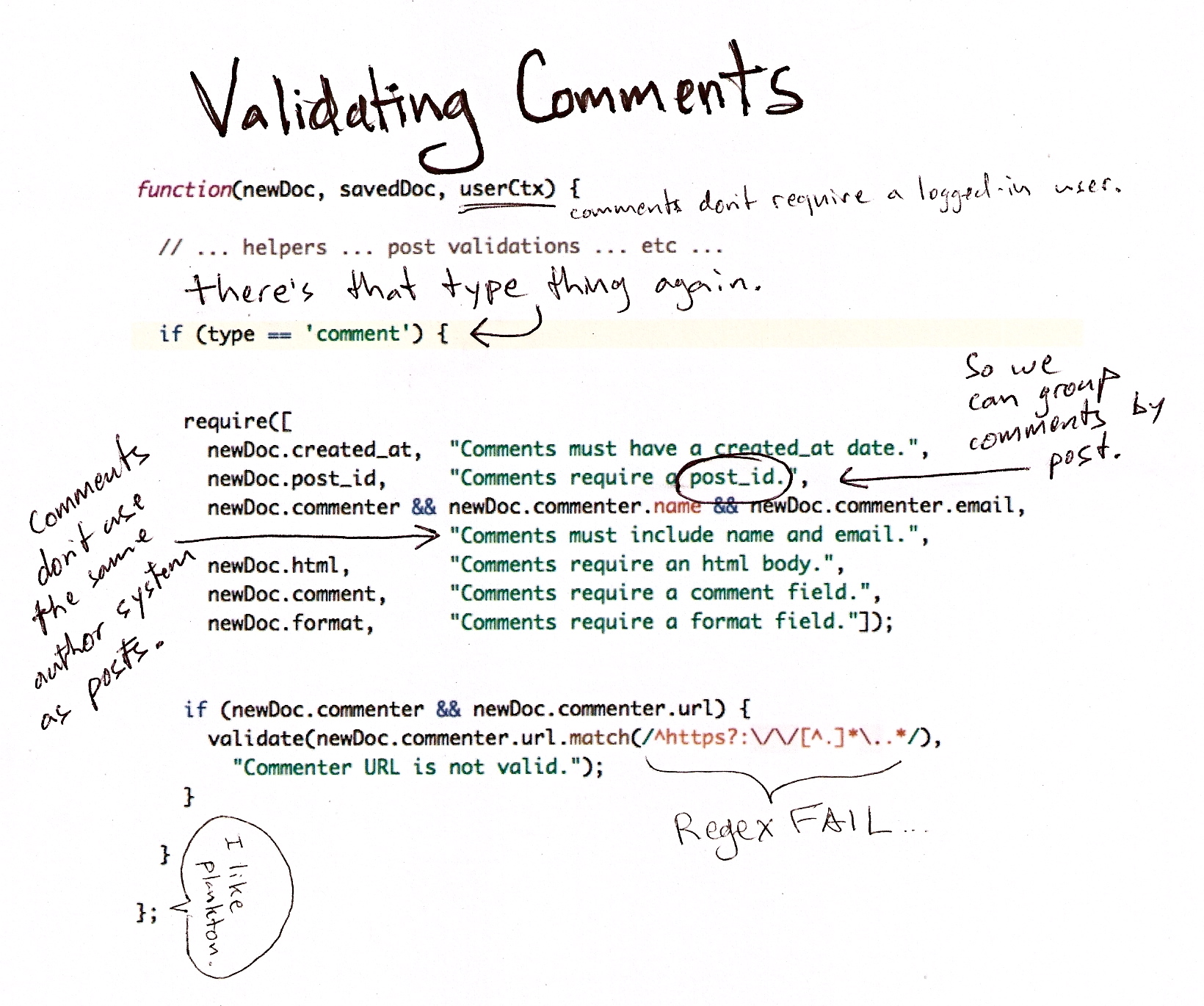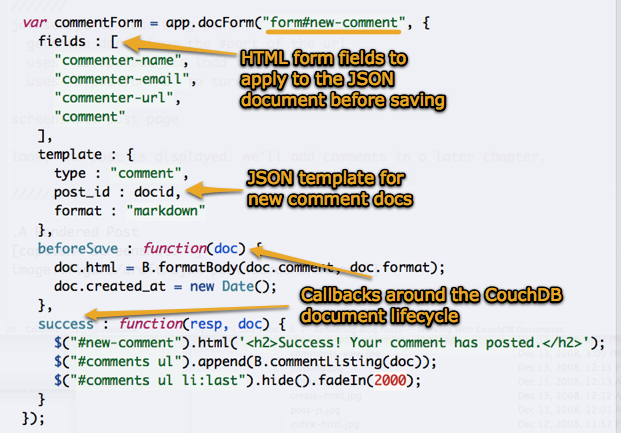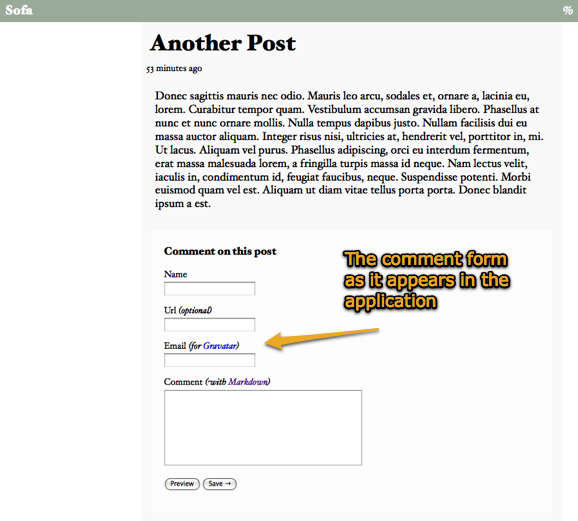
The first thing we’ll need is an HTML form to accept user input. In the previous section, we started with document format design, and here we’re starting from the HTML. Comments aren’t as intergral to the application, so instead of starting from a document schema, we’ll just start from the UI. Sometimes it can be more relaxing to just build the form you want, and let CouchDB handle the rest.
This is what it looks like:

The form for adding comments is presented here, in impressionistic fashion. We’re missing the HTML context, but we’ll be going through the JavaScript in a bit, so seeing the form alone should explain what we’re starting with.
